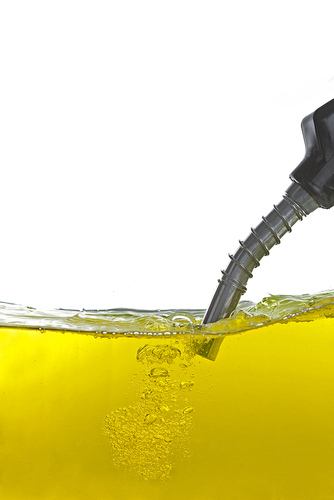As more and more renewable fuels are developed and utilized in different types of transportation, the EPA, in a Proposed Rule titled “Revising Underground Storage Tank Regulations—Revisions to Existing Requirements and New Requirements for Secondary Containment and Operator Training,” outlines a number of compliance requirements and proposed options for those storing fuels containing ethanol above 10 percent or biodiesel above 20 p ercent.
ercent.
In the past, compatibility between UST systems and fuels was demonstrated simply by using equipment certified by a “nationally recognized, independent testing laboratory, such as Underwriters Laboratories (UL).” Unfortunately, those tested components, many of which are still in use today, were created long before ethanol and biodiesel became common in fuel. Although UL does list system components that are approved for higher levels of ethanol, previously installed, unapproved tanks can experience incompatibility issues leading to leaks and spills. In the case of biodiesel, the “EPA is not aware of any nationally recognized, independent testing laboratory that has performed testing on UST system components with biodiesel-blended fuels.” As a result, the Proposed Rule offers two options for demonstrating that UST systems are compatible with regulated substances containing greater than 10 percent ethanol or greater than 20 percent biodiesel.
When it comes to environmental compliance, the Environmental Manager’s Compliance Advisor Newsletter is your "peace of mind" guide to environmental protection agency (EPA) regulations at 40 CFR. Learn More
The first option is to use equipment that is independently certified (such as by UL) for use with the fuel stored. The demonstration of compatibility will be fulfilled “solely by keeping records of these components,” and the testing laboratory’s various labels, listings, or approvals will be sufficient.
The second option is to obtain the manufacturer’s approval of each component’s compatibility with the fuel to be stored. This approval must be written and must include an “affirmative statement” of compatibility between the equipment or component and the stored substance, including the range of fuel blends (i.e., 20 percent to 100 percent biodiesel) covered by the approval. This approval must be issued by the manufacturer only, not a second party such as an installer or distributor.
The EPA will also allow implementing agencies to approve more stringent (no less protective of human health and the environment) methods in addition to the proposed federal requirements. In so doing, the EPA intends to provide “additional flexibility” as new compatibility testing and certification methods are created. In addition, implementing agencies may also extend the compatibility requirements to other regulated substances, such as when a new type of fuel enters the market, allowing for the immediate application of UST requirements.
Join the thousands of environmental professionals who have counted on the Environmental Manager’s Compliance Advisor newsletter’s practical advice and best practice case studies for over 30 years. Learn More
Owners and operators will be required to maintain all equipment and component records for the life of the UST system and will not be allowed to store fuels containing ethanol above 10 percent or biodiesel above 20 percent without the appropriate records on file. The EPA notes this will not only attest to the overall system compatibility but also will provide owners and operators with correct documents when they need to replace all or portions of their system with equally compatible components. Components that are replaced will not be covered by the original manufacturer’s approval, and new approvals for those components must be maintained as well.
Demonstration of compatibility for UST system equipment and components includes:
Tank or internal tank linings,
Piping,
Line leak detectors,
Flexible connectors,
Drop tubes,
Spill and overfill prevention equipment and components,
Submersible turbine pump equipment and components,
Sealants (including pipe dope and thread sealant),
Fittings,
Gaskets,
Bushings,
Couplings,
Boots,
Containment sumps (including submersible turbine sumps and underdispenser containment),
Release detection floats,
Sensors and probes,
Fill and riser caps, and
Product shear valves.
An extended public comment period on the Proposed Rule ended April 16, 2012, and a Final Rule is anticipated in spring 2014.
When it comes to environmental compliance, the Environmental Manager’s Compliance Advisor is your "peace of mind" guide to the Environmental Protection Agency (EPA) regulations at 40 CFR. This plain-English newsletter gives you practical compliance advice on every key environmental compliance topic and acronym from CERCLA … RCRA … NESHAP… NPDES … to SPCC.
Join the thousands of environmental professionals who have counted on the Advisor newsletter’s practical advice and best practice case studies for almost 25 years.
As part of your subscription, you will receive a quarterly insert. This added feature, EHS & Your Business, will help you inform senior management and other key decision makers in your company of business-critical developments in the field of environment, health, and safety (EHS). Each quarterly insert will spotlight one strategic and timely issue as well as briefly highlight the most important EHS legal developments that could affect your business operations, EHS strategy, and EHS ROI.
The practical features in this twice-monthly Advisor eliminate the worry that you might miss or misunderstand an important new regulation. Interested? Learn More Here.
